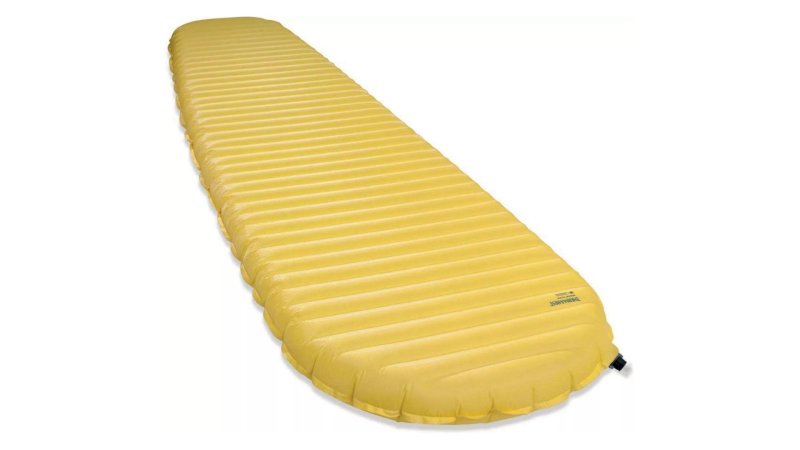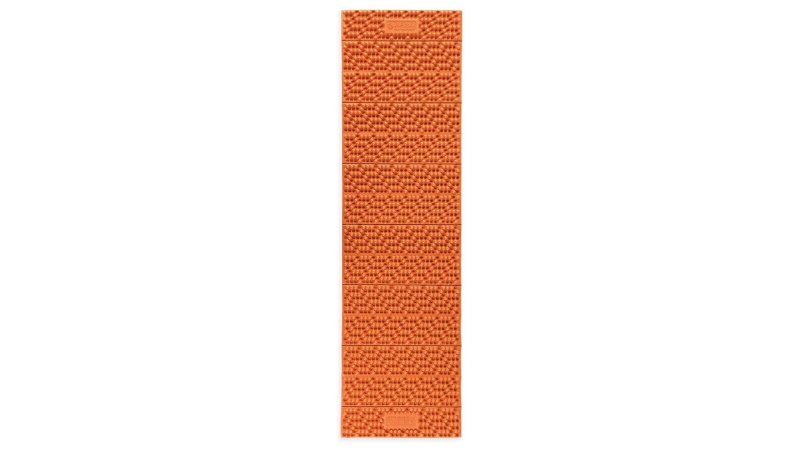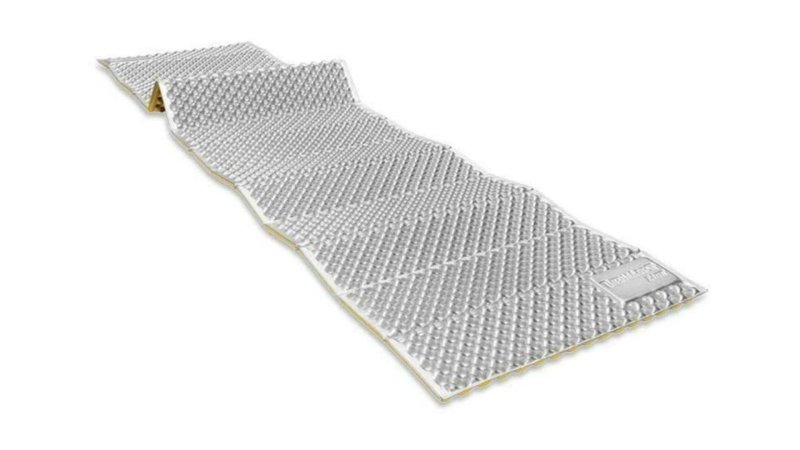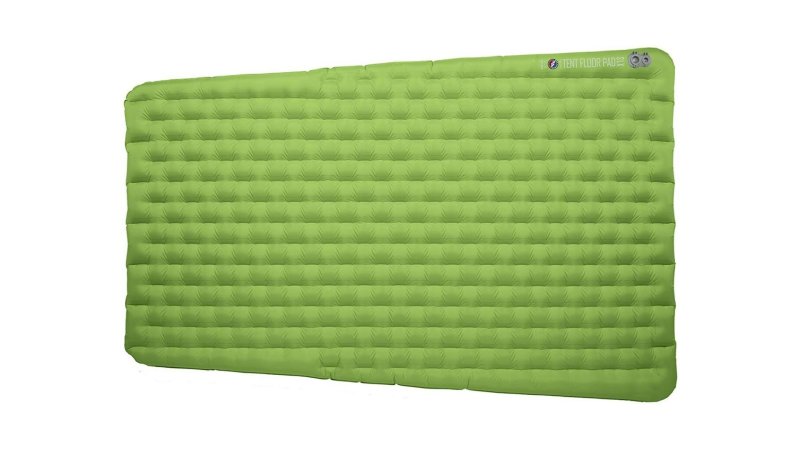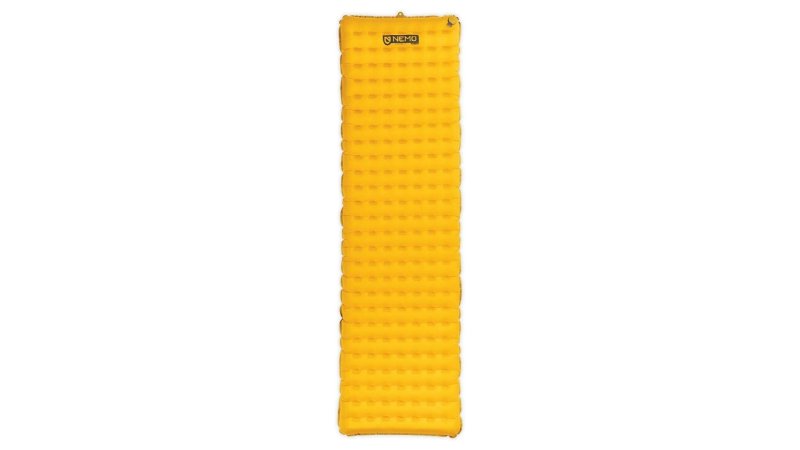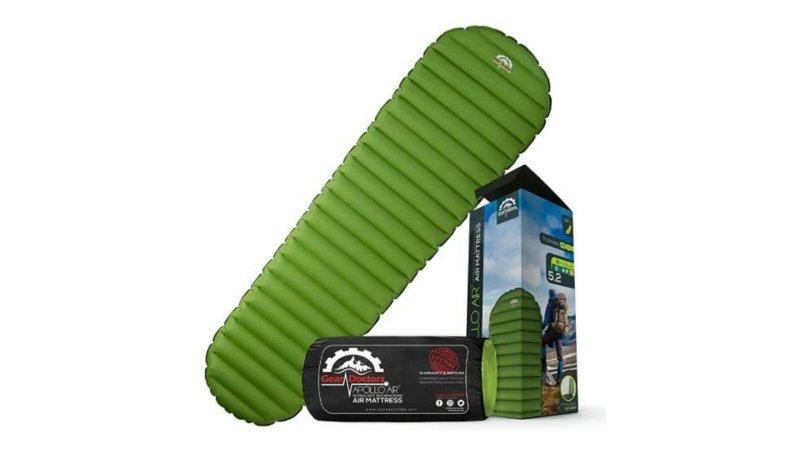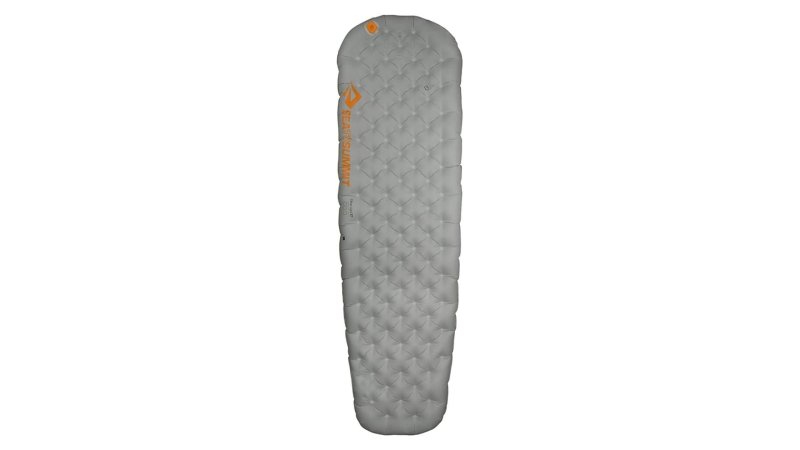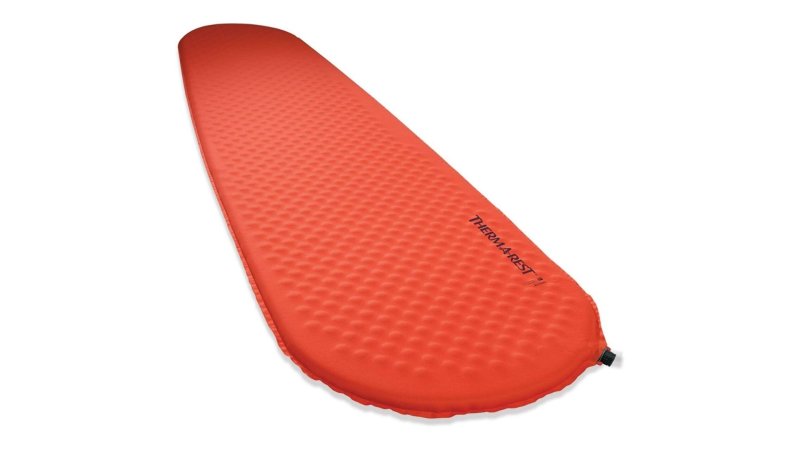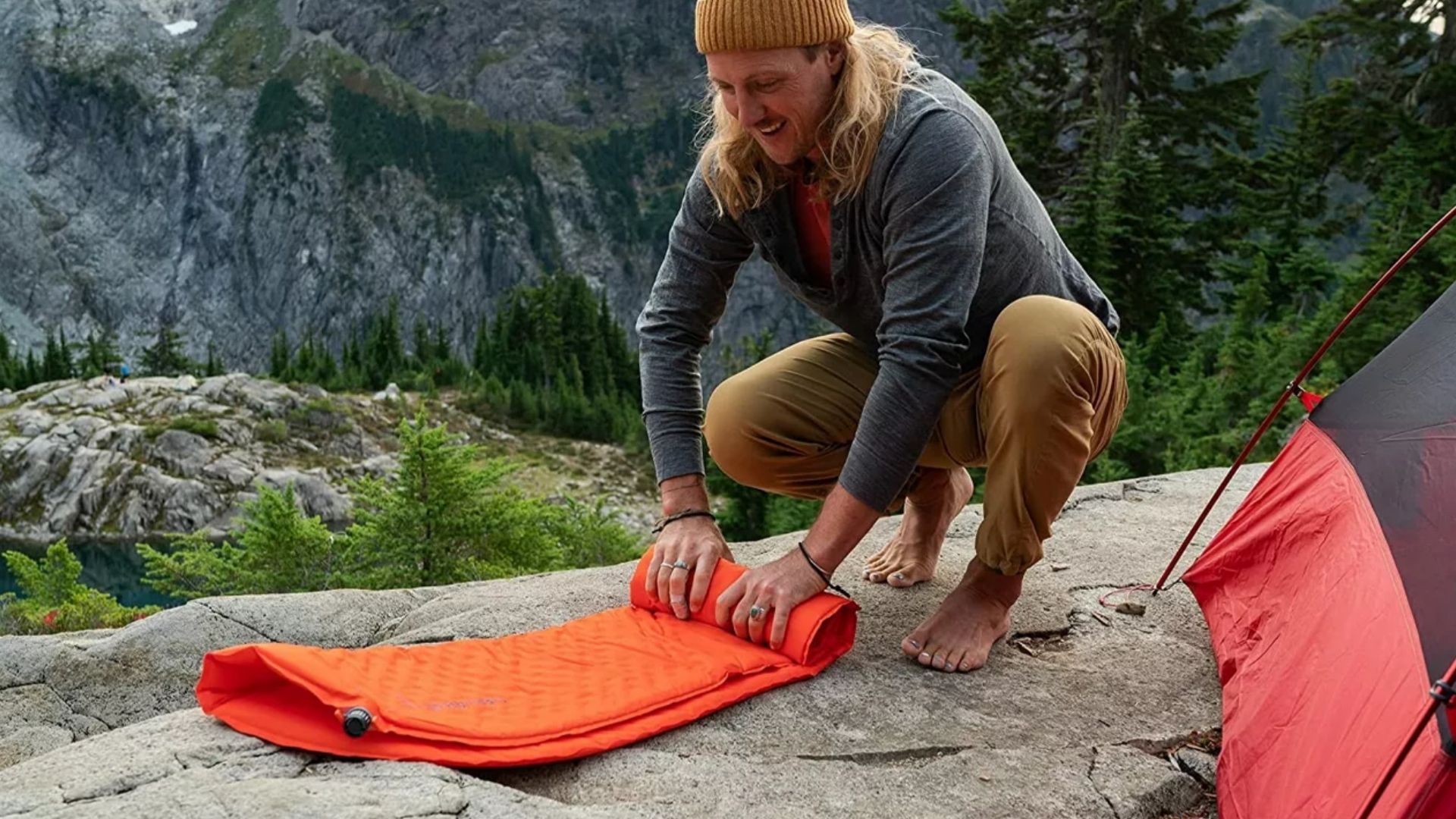

We may earn revenue from the products available on this page and participate in affiliate programs.
To anyone who has never camped or backpacked before, sleeping pads may appear as just a small mattress used for comfort. This is one of the roles they play, but the primary purpose is to insulate you from the ground. Our bodies create heat to keep us warm and functioning, but that heat is constantly transferring from us to the air and things we touch.
Staying warm is about reducing the amount of heat that is transferred as much as possible. When you lay directly on the ground, or with a very thin barrier like your sleeping bag, then your entire body is transferring heat to the earth. Bare dirt and rock are huge heat sponges that suck the heat from you like a vacuum. Take it from me, selecting a quality sleeping pad could mean the difference between a restful or a restless slumber.
The importance of sleeping pads may not seem apparent to many, but it’s something I learned the hard way. In late 2006, I was a brand new Marine going through training at the School of Infantry in Camp Pendleton. For the majority of the three-month training, we were out in the field and slept under the stars. Each evening, set up our sleeping gear in formation and when we woke up, we were expected to pack away everything in just a few minutes.
To save time in the morning, I skipped rolling out my Improved Sleeping Mat (ISO-mat) and instead just slept on the ground. I thought I was smarter than everyone because I didn’t have to roll up and pack up my ISO mat. But I also woke up cold everyone morning. Looking back, I can’t help but laugh at how long it took me to realize why I was so uncomfortable.
Best Overall
Therm-a-Rest NeoAir Xlite
Pros
- High R-value
- Thick padding
- Ultralightweight
- Customizable inflation for comfort
Cons
- Repair kit required for emergencies
- Higher-end of reasonable pricing
Product Specs
Best Value
Nemo Switchback Foam Sleeping Pad
Pros
- Bargain pricing
- Durable
- Ultralightweight
- Can be paired with other pads
Cons
- Low R-value
- Larger to stow
- Not as comfortable as other styles
Product Specs
Editor’s Choice
Therm-a-Rest Z Lite SOL
Pros
- Incredibly durable
- Ultralightweight
- Reasonably priced
- Can be paired with other pads
Cons
- Low R-value
- Larger stowing size
- Not as comfortable as other styles
Product Specs
Best For Two
Big Agnes SLX Insulated
Pros
- Large enough for two people
- Medium R-value
- Lightweight
- Should fit two-person tents
Cons
- Heavier option
- Too big for one-person tents
- High price point
Product Specs
Best Ultralight Sleeping Pad
Nemo Tensor Insulated Sleeping Pad
Pros
- Ultralightweight
- Medium R-value
- Many sizes
- Thicker support
Cons
- High price point
- Air core requires carrying repair kits
Product Specs
Best for Cold Weather
Gear Doctors Ultralight Sleeping Pad
Pros
- Very High R-value
- Ultralightweight
- Lifetime Replacement warranty
- Reasonable pricing
Cons
- Only one size is available
- Air core requires carrying repair kits
Product Specs
Best for Summer
Klymit Static V2
Pros
- Ultralightweight
- Packs down small
- Unique design for increased support
- Bargain pricing
Cons
- Low R-value
- Durability may be less than competitors
Product Specs
Best For Side Sleepers
Sea to Summit Ether Light XT
Pros
- Extra Thick
- Ultralightweight
- Compact carrying size
- Multiple sizes and shapes
Cons
- Lower R-value than expected
- Air core requires carrying a repair kit
Product Specs
Best Self-inflating Sleeping Pad
Therm-a-Rest Prolite
Pros
- Ultralightweight
- Compact carrying size
- Can be paired with other pads
- Easier to inflate
Cons
- Low R-value
- Thinner pad
Product Specs
Why you should trust us
I’m a seasoned adventurer. Growing up in the Pacific Northwest, I spent much of my childhood camping, hiking, and backpacking. In 2006, I joined the Marine Corps as an infantryman, where those activities became part of my job. My ability as an outdoorsman was really put to the test during my 2010 deployment to Afghanistan. I spent my days patrolling remote areas of Helmand Province and nights sleeping outside in the cool open air.
Since leaving the military in 2011, I’ve had escapades in several parts of the U.S., including a 2014 solo trip across the state of Nevada with my dog. Throughout my journeys, I’ve built friendships with other adventurers. We routinely swap stories and experiences to learn and advance our skills. I use each excursion as a chance to apply what I already know and learn more.
Types of backpacking sleeping pads
More often than not, sleeping pads are designed for specific purposes like weather conditions and environments. For instance, one pad might be great to use in the summer, but terrible in winter. They also have advantages and disadvantages for sleeping positions.
Closed-cell foam
Closed-cell foam is a dense sheet of foam where each bubble is separated by thin-pliable walls. An easier way to visualize it is to say it’s like the ISO-mat you’re issued in boot camp (or a yoga mat).
Closed-cell foam sleeping pads are lightweight, durable, and offer consistent insulation in all weather conditions, but they’re also not as comfortable or supportive as other options. Nonetheless, many outdoorsmen use them in addition to a primary sleeping pad.
Open-cell foam
Open-cell foam is when more than half of the cells are open, which makes it softer and more breathable than closed-cell foam. It feels almost like packing insulation. As a sleeping pad, they’re also referred to as self-inflating sleeping pads.
Where the name “self-inflating” comes from is when you roll them up, it pushes the air out, so when you unroll them and open a valve, they expand on their own. But to maximize comfort and capabilities, you still need to blow in a few breaths. While they’re bulkier than other options, they are very comfortable, warm, and durable. They’re a solid utilitarian choice.
Air pad
An air pad is like an air mattress in that it’s inflatable and the primary insulation is air, but they’re usually tailored for individual use and specific temperature conditions. You can find air pad designs for warm, cool, cold, and extremely cold conditions.
Air pads are widely considered to be the most comfortable and the most packable of the three pads, but they’re also the most fragile. They can be punctured and hold water, which will eventually result in bacteria or mold growth.
Key features of backpacking sleeping pads
R-value
R-value is a measurement of insulation, or how well the object resists heat loss. Sleeping pads with a high R-value are warmer. Yet another way to say it is higher R-value sleeping pads are better for colder temperatures. R-value is probably the most important feature of any sleeping pad.
Sleeping pads with R-values of 2.0 or lower are suitable for summer and maybe spring seasons. Pads with ratings of 2.1-3.5 are appropriate for summer, spring, and fall. These are commonly referred to as three-season pads. Any pad rated 3.5 or higher is meant for cold weather. However, 4.5 and above is ideal for snowy and frozen terrain. Just don’t forget that you can supplement your air core pad with a closed- or open-cell foam pad.
Additionally, the outdoor gear industry adopted ASTM F3340-18 in 2020 as the universal standard for testing R-values. Before this, each manufacturer used one of several different test methods, which didn’t offer a fair comparison of R-values. Any pad that has undergone this ASTM test can be fairly compared with any other pad having gone through the same test.
Size and shape
The standard size for sleeping pads is 20-inches wide and 72-inches long, but you can find them shorter, longer, and wider. Ideally, you’d want one big enough to support your body not just comfort, but for warmth because if you’re feet dangle off, they’ll probably get cold.
Sleeping pads come in two common shapes: rectangular and tapered. When it comes to performance, there’s not much of a difference between them except that a tapered pad will weigh a few ounces less because it uses less material.
Additionally, if you plan to use a tapered sleeping bag – the one that makes you look like a mummy – you’ll want to use a tapered pad. Sleeping systems usually have straps or pockets so you don’t fall off while you sleep, but they’re only effective when they fit.
Air Valve
The air valve is particular to both air core and open-cell foam pads. It’s where air enters when you inflate the pad and exits when you deflate the pad. They can be as simple as the rubber valves you’ll find on pool floaties or more technical and made of hard plastic.
The most important thing to consider when you’re shopping is ease of use. Some are easy to inflate, but difficult to deflate or vice versa. If you’re using it in cold weather, you’ll want to know how easy it is to use while wearing gloves or with limited dexterity.
There are also multiple ways to inflate a sleeping pad. They range from simply blowing it up with your mouth to using a manual or electronic pump. Nonetheless, you’ll definitely want to test it out before you buy it.
Benefits of backpacking sleeping pads
Warmth
Let’s get real, the most important benefit of a sleeping pad is that it can help keep you warm at night. This may not matter in warmer climates, but when it is cold outside and you’re days into a several-week-long trip it sure does. Keeping warm isn’t just about comfort. The cold can prevent our bodies from healing themselves while out backpacking. Older hikers can attest to that.
Hypothermia is technically anytime our body temperature drops below 95 degrees. When that happens our bodies begin to battle the drop in temperature. It can’t heal and repair hiking soreness while simultaneously staving off freezing. Our bodies will prioritize heat loss in the hopes of surviving the experience. Staying warm at night will allow your body to heal, repair, and recover so that you can abuse it again the next day.
Comfort
As a young buck, I never paid much attention to the whole comfort factor. That might be why my body is so beat up, which is how I’ve come to realize how nice it is to be comfortable while sleeping in the wilderness. There is something about laying down after a long hard day of hiking and climbing to feel weightless. It is a strange feeling that changes everything, kind of like putting on a dry pair of socks after getting your feet drenched or a shower after a week without one. That weightless feeling can be more invigorating than anything else.
Those of us with neck, back, or joint issues can appreciate that special cradled feeling. As you get older, or just more injured, the angles your body rests in begin to weigh more on recovery. A kink in the neck, tight back, aching knee, or any number of issues could make a backpacking trip much less enjoyable. Feeling comfortable throughout the night without the risk of aggravating past injuries will make the excursion a whole lot more memorable.
Seating
Thinking outside the box goes a long way in life, especially when out in the wilderness with nothing but your gear. Sleeping pads make great seat cushions for whenever you need to rest your rump without going to bed. Playing that game of cribbage, sharing stories, or sitting down to eat is another opportunity to use your sleeping pad. If you’re sitting on the bare earth, that’s like sleeping on the bare earth. Heat can sap away from you while you’re trying to relax. All you need to do is fold up your mat into the right shape and voila! It’s now a seating pad that allows you to take a break without suffering.
Pricing considerations for backpacking sleeping pads
Bargain
The old adage of “you get what you pay for” really does apply for backpacking sleeping pads at less than $50. While the bargain pricing category doesn’t necessarily mean that the pad will be garbage, it’s a good indicator. Even those with the best quality in this category will have performances that pale in comparison to higher-priced options. Pads in this category will be below $50 and they’ll do the trick in a pinch, but won’t be ideal for extended multi-day usage.
Mid-range
Between $50 and $200 is the price we wish we could pay for the nice stuff. Sleeping pads that are reasonably priced can be found between $50 and $200 and will be made of higher quality materials than those at bargain pricing. This results in better performances and a wider range of usage. You can easily find a great pad in this category for whatever you’re doing.
Premium
Outdoor adventure gear is expensive! You look at a sleeping pad and wonder how it can cost so much. That’s because this gear is designed to save your life in the worst-case scenario. This is why some of the sleeping pads can cost more than your monthly Prius payment. Unless you’re an outdoor professional, hermit, or obsessed outdoor enthusiast there isn’t much reason for you to purchase something in this category. Sleeping pads in this price range are over $200 and are meant for the most extreme circumstances.
How we chose our top picks
There is a myriad of options on the market, so the sleeping pads we selected had to meet specific performance criteria. To ensure the sleeping pads were compatible with backpacking, we chose trim and lightweight options and largely avoided bulky and heavy pads. Since insulation is a big factor, each pad had to have a verifiable R-value (not all manufacturers test their products). Pricing had to be realistic as well, so we avoided extravagantly priced options because the amount of research that goes into the development of highly capable sleeping pads is intense. And of course, the sleeping pads had to be durable so that you’re investing your money wisely.
FAQs on backpacking sleeping pads
You’ve got questions, Task & Purpose has answers.
Q. What is R-value?
A: The R-value is short for “resistance value” and refers to the pad’s ability to resist heat transference. High R-value sleeping pads are better for cold weather while lower R-value pads are better for warmer temperatures.
Q. What is a good weight for a backpacking sleeping pad?
A: The answer to this question truly depends on what you intend to do. For those looking to through-hike or do multi-day backpacking excursions, you’ll want an ultralight pad weighing one pound or less. If you’re only going on a one or two-day trip then you would probably be fine with something under five pounds. Anything over five pounds would be best for car camping or other uses that don’t require you to carry the pad.
Q. Can I use more than one sleeping pad?
A: Yes, but I don’t encourage more than two. The best way to do this would be to use a closed-cell foam pad as the base and place an open-cell foam or air core pad on top. This is a great way to amplify the R-values, especially on frozen terrain.
Q. How to store a sleeping pad?
A: For closed-cell foam pads, they are easily rolled or folded up and can be stored naked or in a case. Open-cell foam pads can be rolled up as well but for long-term storage, it is a good idea to keep it semi-inflated so the foam doesn’t stay compressed. Air core pads can be simply stored in their carrying case after deflating and rolling them up.
Q. How do I choose the right size and shape sleeping pad?
A: Ultimately the size of the pad will be determined by your height as you should be able to lay on the pad without your feet or head touching the ground. The shape is trickier only in the sense that it is a personal preference. The shape doesn’t matter unless you plan to put your pad inside of your sleeping bag.
Our gear section
Scott Whisler is a Marine Corps veteran and family man. He’s an avid student of philosophy who strives for self-growth and challenge, both found in his outdoor adventures. As a new Okie, his focus is on exploring the South Central region. His lifetime goal is to have excursions in all of the National Parks.
